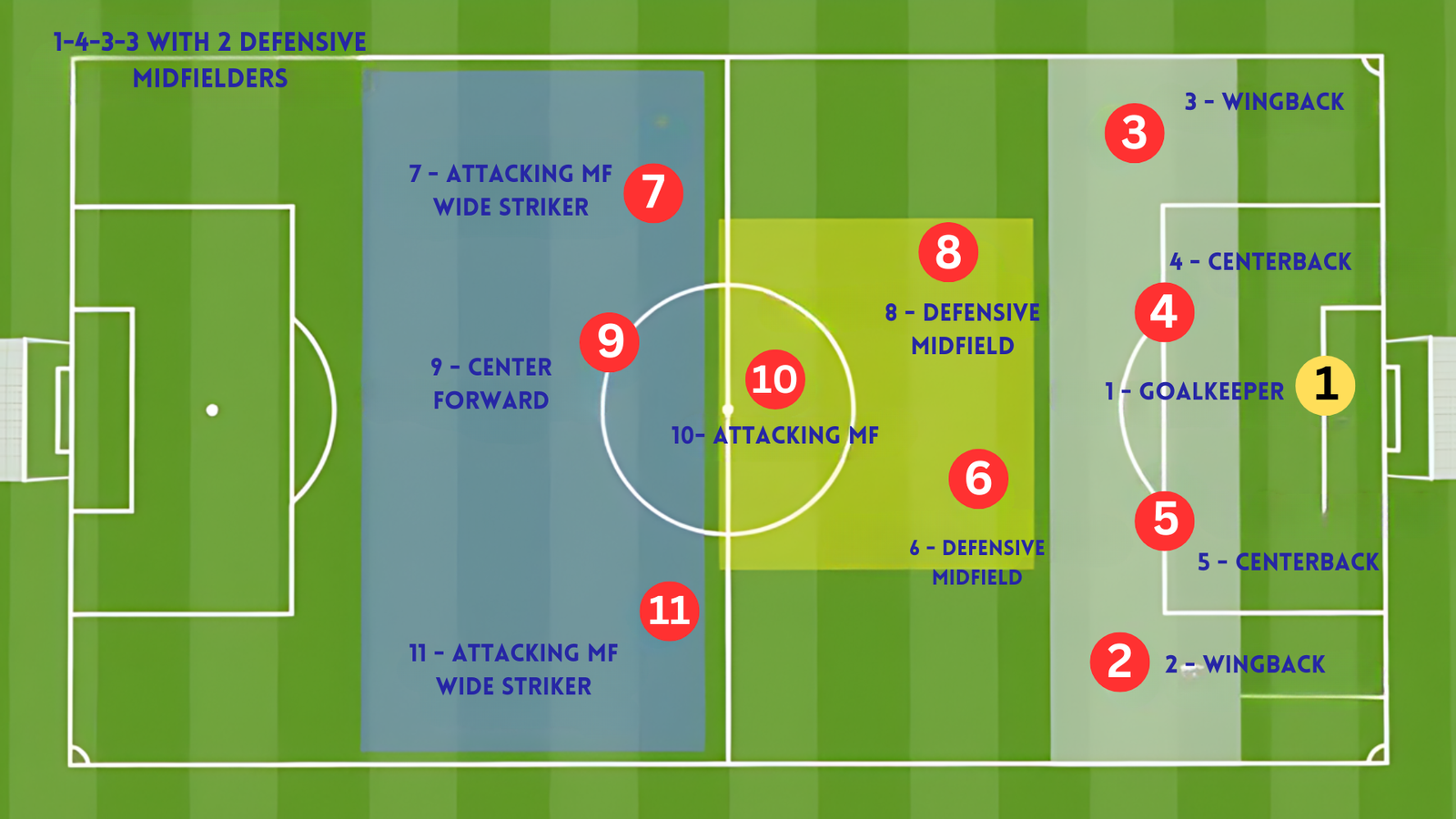
Will the change in position or technique really changes the game?
Well, we should say yes. Positions of football will have a great impact on each individual and also the whole game.
It can change how a team plays, helps them take advantage of their strengths, and exploit the other team’s weaknesses.
To know what kind of positions of football can change the game and how many positions are actually involved in the game are clearly explained in this article.
| NUMBER | POSITION |
| 1 | The Goalkeeper |
| 2 and 3 | Full-backs |
| 4 and 5 | The “Center-Back” and “Sweeper” |
| 6 and 7 | Defensive Midfielders |
| 8 and 10 | Attacking Midfielders |
| 9 | The Center-Forward |
| 11 | The Second Striker |
| 12,13 and 14 | The Substitutes |
From the above positions of football there are few hardest and some positions are flexible, which absolutely depends on the player.
Now, how do you choose the best position for you? Want to know what kind of position changes your game?
Then, just continue reading so that you can have the answer you’re looking for!!
Role of Each Positions of Football
Certainly! Here’s a brief explanation of each positions of football.
The Goalkeeper (GK)

The goalkeeper, the main among all the positions of football, is the player who defends the goal and can use their hands only within the penalty area. Their main job is to stop the other team from scoring by saving shots and helping organize the defense.
Full-backs (RB/LB)
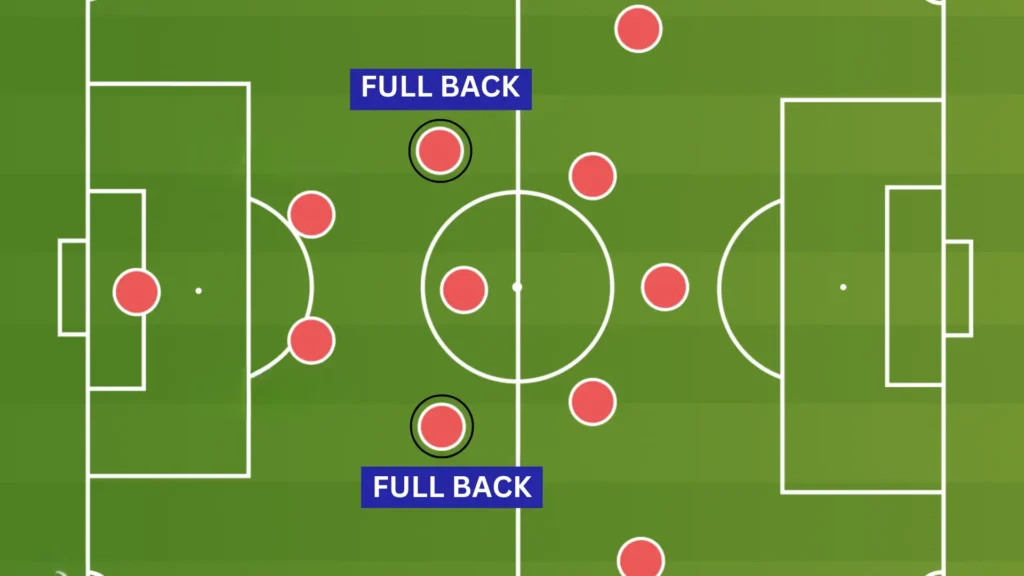
Full-backs play on the left and right sides of the defense. They block wingers from the other team and often join midfielders to help with attacks. They also cross the ball into the opponent’s penalty area and support the team both defensively and offensively.
The Center-Back (CB) and Sweeper
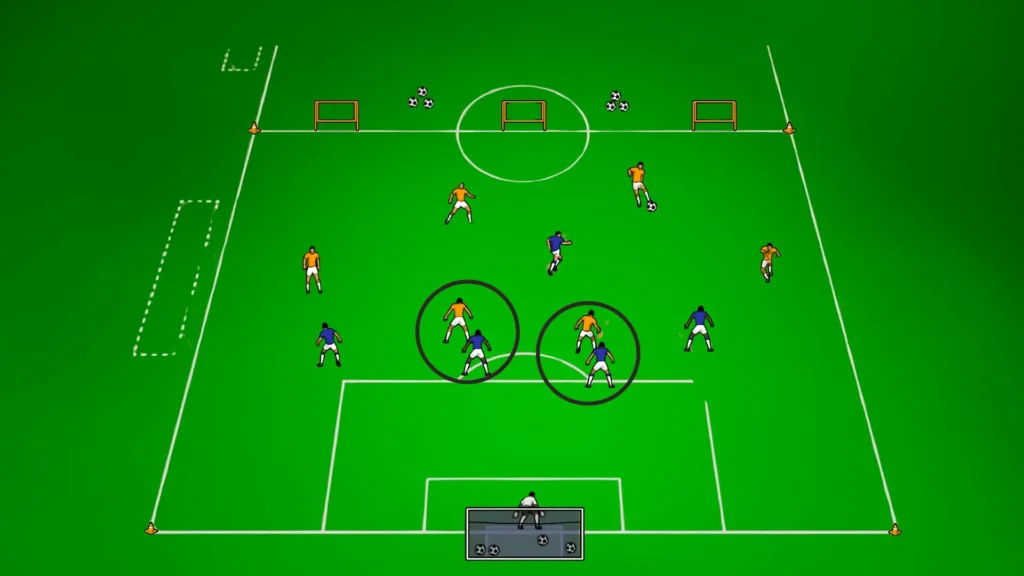
Center-Back (CB): Players are located in the middle of the defense, usually in pairs or threes. Their main job is to stop the opposing forwards, block shots, and clear the ball from their defensive area.
Sweeper: Players are positioned behind the center-backs in some setups. They clear the ball from the defensive zone and cover any gaps in defense, often acting as the last line of protection before the goalkeeper.
Defensive Midfielders (CDM)
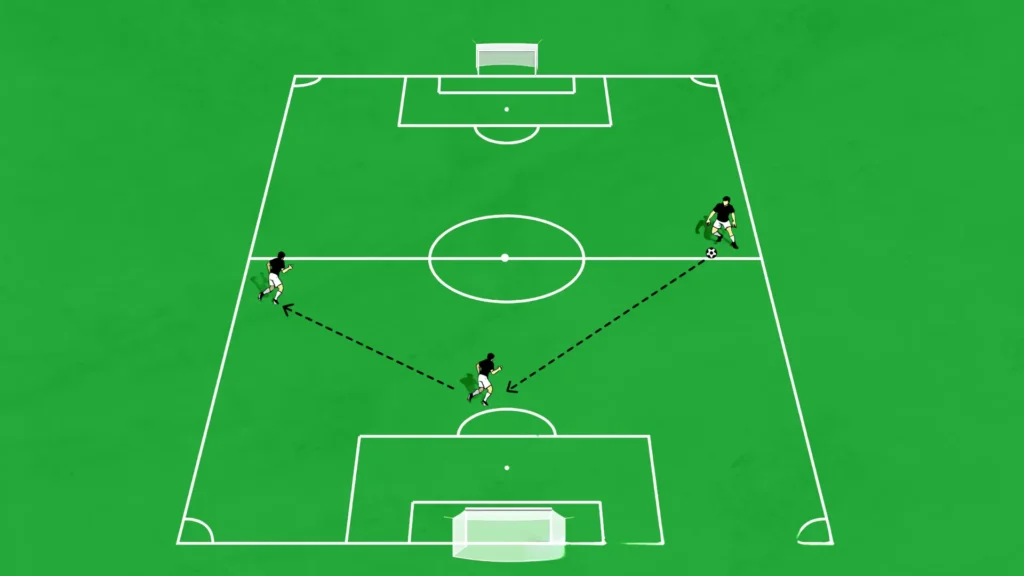
Players are located in front of the defense, their main job is to protect the backline by intercepting passes, tackling opponents, and stopping the other team’s attacks. They also help move the ball from defense to attack.
Attacking Midfielders (CAM)

Players are located closer to the forwards, their main job is to create chances for goals with their passing, dribbling, and creativity. They play a key role in connecting the midfield with the attack.
The Center-Forward (CF)
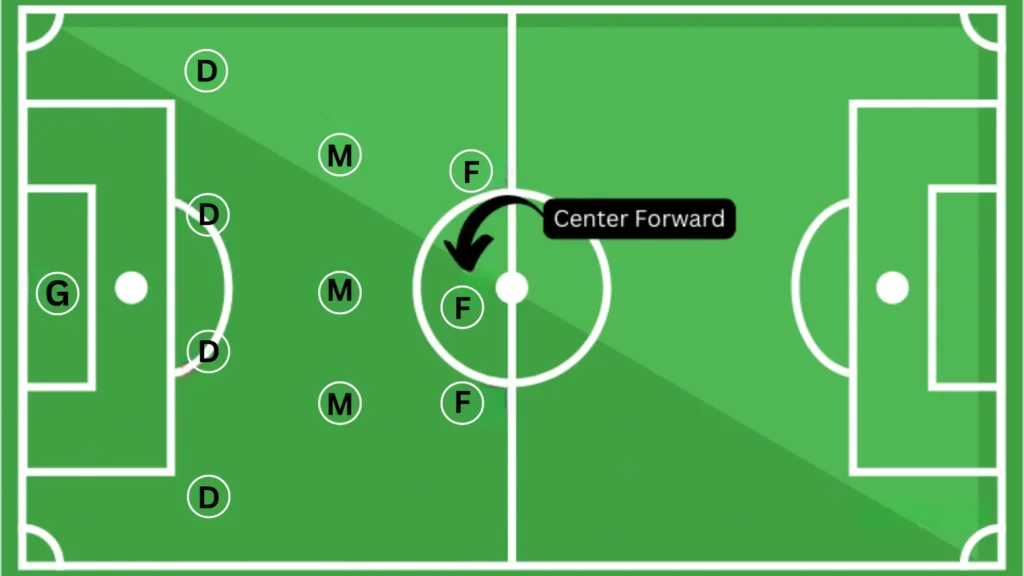
Players in this position play centrally in attack, their main job is to score goals. They often hold the ball, create chances for themselves and others, and take advantage of crosses and passes from teammates.
The Second Striker (SS)
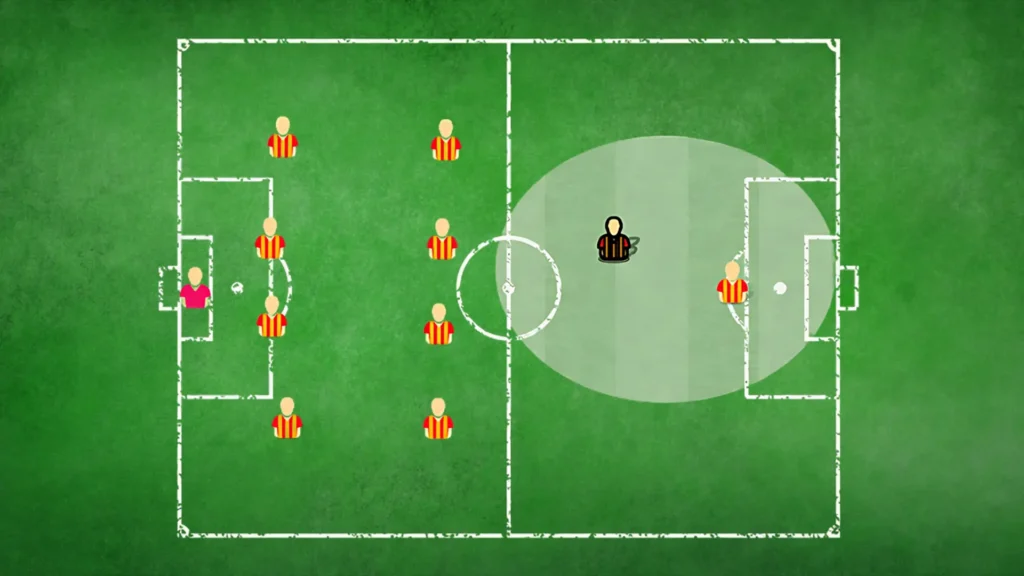
Players are located just behind the main striker, they mix the roles of a striker and a playmaker. They often score goals, create chances, and support the main forward.
The Second Striker (SS)
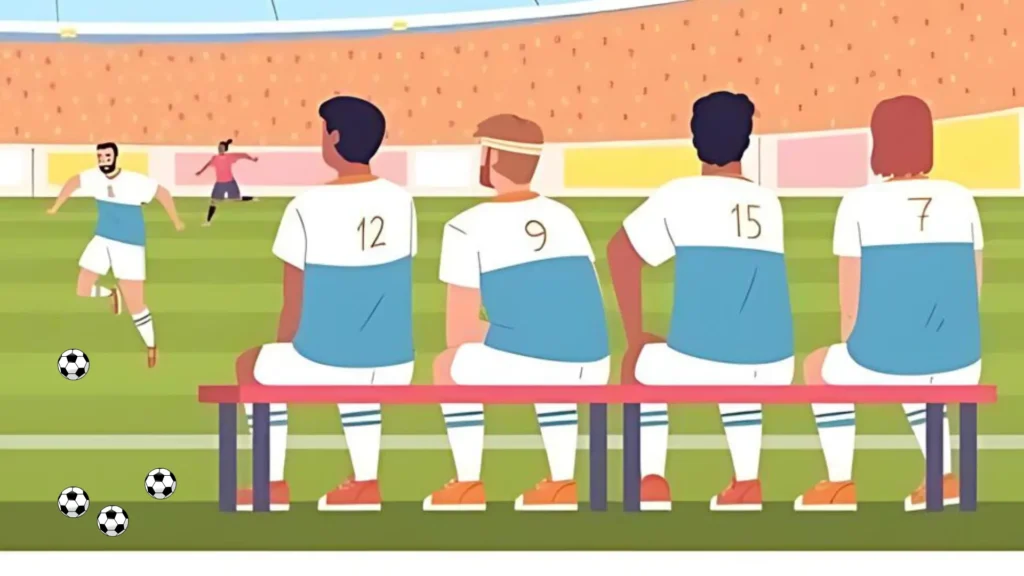
Substitutes are players who aren’t in the starting eleven but can replace them during the game. They can bring fresh energy, make tactical changes, or cover for injuries and suspensions. Each team is usually allowed a set number of substitutions per match.
In modern football, players consider all the positions of football and often take on multiple roles depending on the game’s situation, offering more tactical flexibility.
For example, a full-back might push forward to play as a wing-back, helping the team in attack, while midfielders switch between defending and creating chances based on the team’s strategy.
How GoalKeepers Influence The Game
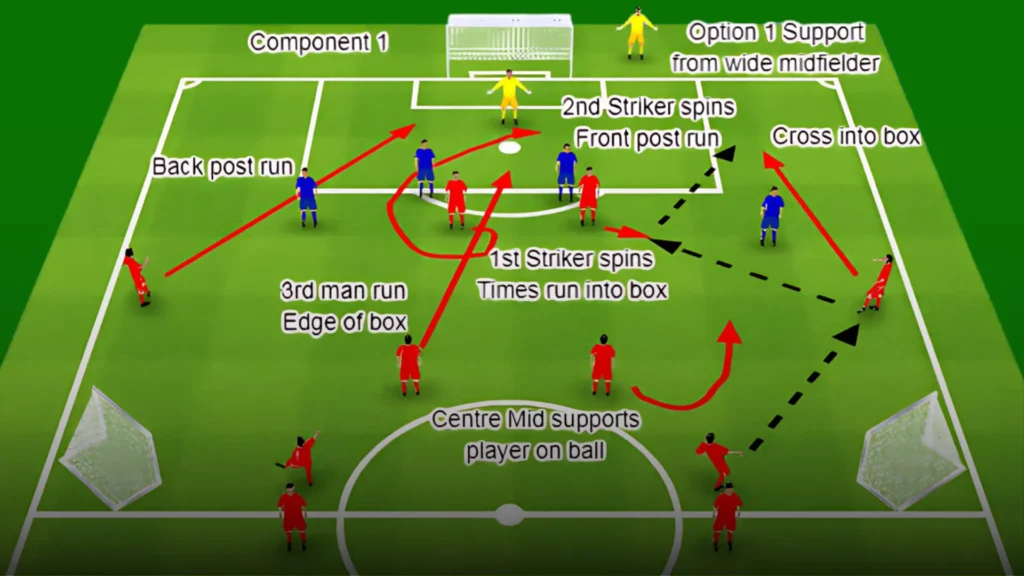
Goalkeepers play a huge role in football, and their positioning can really impact the match. Here’s how:
1. Sweeper Keeper:
Modern goalkeepers often act like sweepers, moving out of their goal area to clear the ball or stop attacks. This helps the defense by cutting off dangerous plays and keeping the team’s defensive line high.
2. Starting Attacks:
Goalkeepers also help kick off attacks. With accurate goal kicks or throws, they can quickly send the ball to teammates in attacking positions. This can catch the opposing team off guard and shift the game in their team’s favor.
3. Organizing Defense:
A goalkeeper’s job isn’t just to save shots; they also help organize the defense. By directing defenders and adjusting their own position, they keep the defense tight and make it harder for the opponents to score.
4. Boosting Team Spirit:
A confident goalkeeper can boost their team’s morale. Making important saves can lift everyone’s spirits and put pressure on the opposing team. On the flip side, mistakes by the goalkeeper can be demoralizing for the team.
5. Adapting to the Game:
Goalkeepers need to adjust their positioning based on how the game is going also by considering all the positions of football. If the team is behind, the goalkeeper might come forward more to support attacks. When leading, they’ll stay closer to the goal to protect the lead.
How Full-Backs and Wing-Backs Change The Game

Considering the positions of football, full-backs and wing-backs are essential players on the sides of the field, and they can really impact how the game unfolds.
Full-backs play on the left and right sides of the defense. They block the opponent’s wingers and help their team attack by moving up and down the flanks. This stretching of the defense creates more space for other players to use.
Wing-backs, on the other hand, push even higher up the field, especially in formations like 3-5-2.
They act like extra wingers, making more crosses into the opponent’s area and joining the attack more often. They also need to quickly get back to defend when needed.
Both full-backs and wing-backs help create space. Full-backs pull wingers wide, opening up room in the middle, while wing-backs pull defenders away from their spots, making it easier for teammates to find gaps.
They need to be flexible, switching between attacking and defending which ofcourse the important part of all positions of football as they intent to change the game. This adaptability helps the team adjust to different situations and counter the opponent’s moves.
Defensive and attacking midfielders: Key Roles In Football
Defensive and attacking midfielders each play crucial roles in positions of football. Defensive midfielders are like a shield for the team. They stop the other team’s attacks with tackles, cover gaps in defense, and control the game by winning the ball and passing it to teammates.
They also help start their team’s attacks by moving the ball forward quickly.
Attacking midfielders, on the other hand, focus on creating and scoring goals. They make accurate passes to set up scoring chances, support the attack by making runs into the opponent’s box, and score goals themselves.
They connect the midfield with the forwards, making sure the attack runs smoothly.
Adapting Positions During a Match
In football, being able to change positions of football during a game is really important for keeping the game in your favor.
Positions of Football on the field aren’t set in stone; they often change based on what’s happening in the match and what the other team is doing.
Midfielders also switch roles depending on what’s needed. A defensive midfielder might move forward to help with the attack, while an attacking midfielder might drop back to assist with defense.
These changes help teams adjust to different situations, whether they need to defend a lead, push for a goal, or take advantage of the opponent’s weaknesses.
Top Players of Each Positions of Football
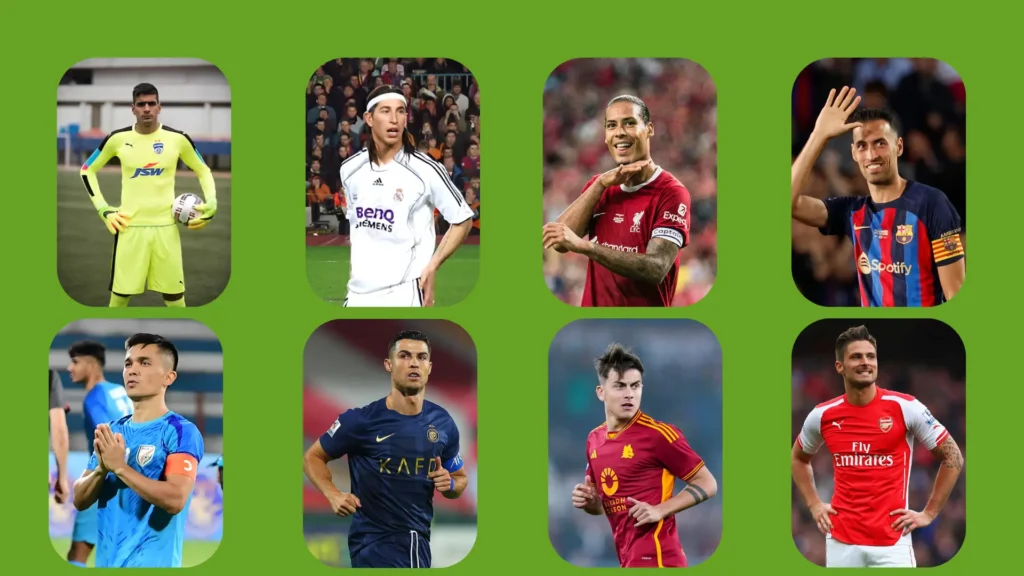
Certain players have become legendary because of how they mastered their positions of football.
- Gurpreet Singh Sandhu from India is known for his excellent shot-stopping and strong leadership. Alisson Becker from Brazil is praised for his quick reflexes and accurate passes that help start attacks. Both goalkeepers are key to their teams’ defense and overall strategy.
- Sergio Ramos from Spain is admired for his versatility and ability to contribute to attacks, even though he’s a defender. Trent Alexander-Arnold from England is famous for his attacking skills and precise crosses from the right side.
- Virgil van Dijk from the Netherlands is well-regarded for his strong presence in defense and aerial duels. Franco Baresi from Italy is celebrated as a legendary sweeper for his smart defensive play and positioning.
- Sergio Busquets from Spain is great at breaking up attacks and controlling the game’s pace. Anirudh Thapa from India is known for his solid defense and ability to set up play from deep. Together, they balance defensive duties with playmaking.
- Sunil Chhetri from India excels in creating and scoring goals from midfield. Kevin De Bruyne from Belgium is known for his amazing vision and precise passing that drives attacks. Both are crucial for playmaking and scoring.
- Cristiano Ronaldo from Portugal is one of the top goal-scorers with his impressive finishing skills. Karim Benzema from France is versatile, not just scoring but also setting up chances for his teammates. Both are standout center-forwards.
- Paulo Dybala from Argentina is celebrated for his creativity, dribbling, and scoring. Wayne Rooney from England was great at both scoring and setting up plays. Together, they show the flexibility needed for a second striker role.
- Olivier Giroud from France is known for making a big impact off the bench with his physical presence and goal-scoring. Marcus Rashford from England often uses his speed and finishing to make a difference when he comes on. Both are crucial for effective substitutions.
Conclusion
To conclude, the positions of football really do make a difference in the game. Every position, from the goalkeeper to the forwards, has a unique role that helps the team succeed.
Changing positions or adjusting tactics can have a big impact on how a match plays out. Understanding and playing the right position can truly change the way the game is played.
To learn more about football positions and tactics, you can know here.

Leave a Reply